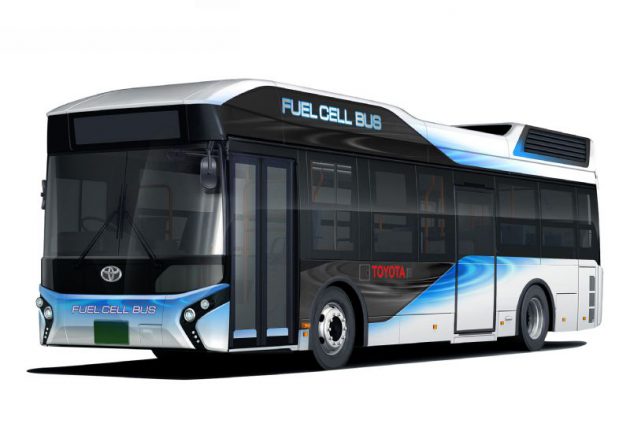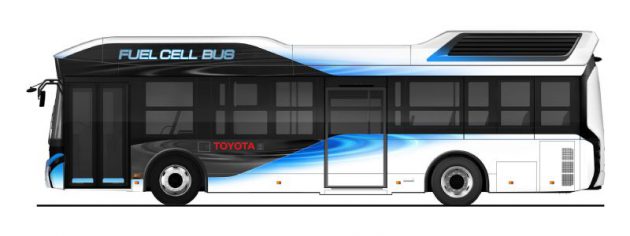Toyota Motor Corporation will begin selling fuel cell buses under the Toyota brand from early 2017.


Having already undergone repeated field tests for practical use, the Bureau of Transportation of the Tokyo Metropolitan Government plans to utilise two of these fuel cell buses (model name: Toyota FC Bus) as fixed-route buses.
Toyota plans to introduce over 100 fuel cell buses mainly in the Tokyo area, ahead of the Tokyo 2020 Olympic and Paralympic Games.
The Fuel Cell buses will be sold for the first time in Japan in early 2017 to help increase the general public’s level of understanding of fuel cell buses as a form of public transportation.
In preparation for the Tokyo 2020 Olympic and Paralympic Games the number of fuel cell buses being introduced will increase steadily.
Toyota aims to engage continuously in the development, targeting the expansion of the introduction of new fuel cell buses from 2018, contributing to the realisation of a hydrogen-based society.
The Toyota fuel cell bus was developed by Toyota, based on the company’s experience in developing fuel cell buses together with Hino Motors Ltd.
The Toyota Fuel Cell System (TFCS)1, which was developed for the Mirai fuel cell vehicle, has been adopted to provide better energy efficiency in comparison with internal combustion engines and to deliver superior environmental performance, with no CO2 emissions or substances of concern (SOCs) when driving.
The bus also uses a high-capacity external power supply system. With a power supply capable of a 9kW2 maximum output, and a large capacity of electricity supply at 235kWh3, the fuel cell bus can be used as a power source in the event of disasters, at evacuation sites such as school gymnasiums4 or its electricity supply can also be harnessed for home electric appliance use.
The Toyota Group considers the use of hydrogen to be a powerful source of energy for the future. Toyota has released the Mirai fuel cell vehicle, while also engaging in the technological and product development of fuel cell buses and forklifts, as well as stationary fuel cells for use in homes.
The group will accelerate developments in a unified manner to contribute to the realisation of a hydrogen-based society.
Main specifications of the Toyota Fuel Cell Bus
| Vehicle | Length / width / height | 10,525 / 2,490 / 3,340mm |
| Capacity (seated, standing, and driver) | 77 (26+50+1) | |
| Fuel Cell stack | Name | Toyota FC stack |
| Type | Solid polymer electrolyte | |
| Maximum output | 114kW × 2 units | |
| Motor | Type | AC synchronous |
| Maximum output | 113kW × 2 units | |
| Maximum torque | 335Nm × 2 | |
| High-pressure hydrogen tank | Number of tanks | 10 |
| Nominal working pressure | 70 MPa (approx. 700 bar) | |
| Tank storage density | 5.7 wt% | |
| Tank internal volume | 600 litres | |
| Drive battery | Type | Nickel-metal hydride |
| High-capacity external power supply system | Maximum output | 9kW |
| Power supply amount | 235kWh | |
 FastMotoring Motor News In Speed
FastMotoring Motor News In Speed
